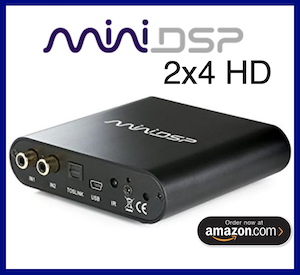mindedc
Registered
Thread Starter
- Joined
- Aug 2, 2019
- Posts
- 1
More
- Preamp, Processor or Receiver
- Marantz 7702 MKII
- Main Amp
- Acurus 200x5
- Additional Amp
- Acurus 200x5
- Other Amp
- Acurus 200x3 + 200x2
- Front Speakers
- DIY Soundgroup HTM12
- Center Channel Speaker
- DIY Soundgroup HTM12
- Surround Speakers
- DIY Soundgroup Volt 6
- Surround Back Speakers
- DIY Soundgroup Volt 6
- Front Height Speakers
- DIY Soundgroup Volt 6
- Rear Height Speakers
- DIY Soundgroup Volt 6
- Subwoofers
- 2x Rhythmik FV15HP
- Screen
- Seymour Screen Excellence 120" 2.35:1 Neo AT
- Video Display Device
- JVC RS520 + Panamorph DC1
- Remote Control
- Control 4
I have quite a few channels in my HT, atmos, dual surrounds, etc.. and two rows of seating. I also happen to have 3 calibrated microphones and was hoping to be able to use more than one mic at a time to gather measurements from multiple seating locations per speaker per measurement run. If I can just measure 3 points simultaneously on each row , that takes me from 90 measurements (15 channels x 3 measurement points per row x 2 rows = 90) down to 30 measurements (15 channels x 2 rows with 3 simultaneous measurements = 30).
Can I use the timing reference feature to either use multiple instances of REW or multiple laptops (I do have access to three laptops) with one mic each and timing reference to speed things up a bit?
I am thinking worst case I set one laptop up normally with timing reference enabled, set up the other two without any audio output. I would then hit "start measurement" on the two no-output laptops, then hit start on the one actually connected to the speakers. It seems like that would collect three spatially diversified measurements in one "pass".
Am I crazy or is there a better way to do this?
Can I use the timing reference feature to either use multiple instances of REW or multiple laptops (I do have access to three laptops) with one mic each and timing reference to speed things up a bit?
I am thinking worst case I set one laptop up normally with timing reference enabled, set up the other two without any audio output. I would then hit "start measurement" on the two no-output laptops, then hit start on the one actually connected to the speakers. It seems like that would collect three spatially diversified measurements in one "pass".
Am I crazy or is there a better way to do this?












